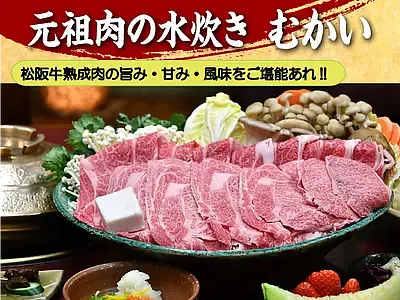赤福の朔日餅(ついたちもち)を特集しました♪ ~食べられるのは年1度だけ!~
掲載日:2023.03.08
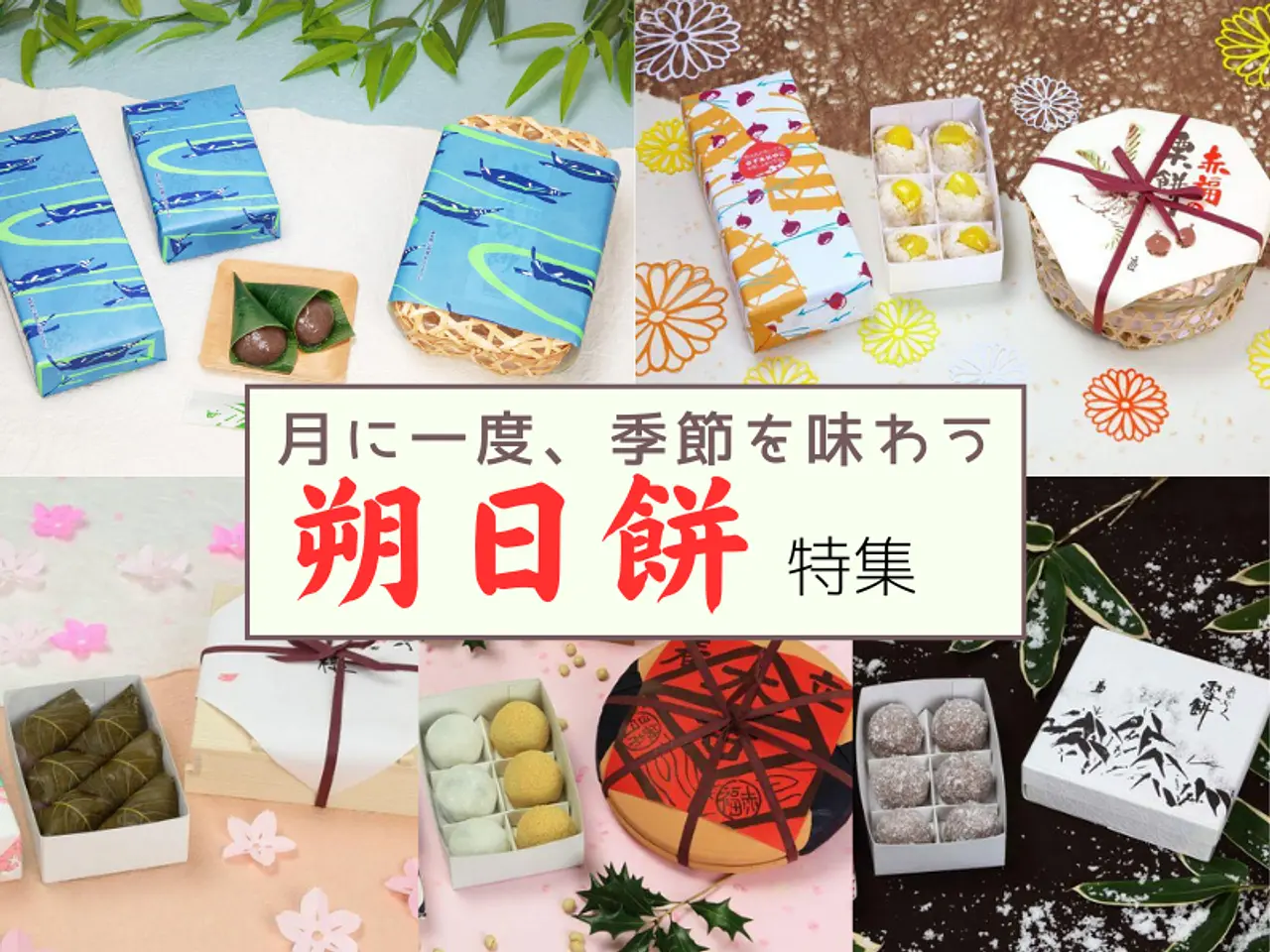
伊勢には、毎月一日に普段より早く起きて、神宮へお参りする「朔日(ついたち)参り」というならわしが今も残っています。
「朔日参り」では、無事に過ごせた一ヶ月を感謝し、また新しい月の無事を願ってお祈りをします。
赤福本店では、お正月を除く毎月一日に「朔日餅」が用意されているので、皆様も「朔日参り」と「朔日餅」を楽しんでみてはいかがでしょうか。
赤福(朔日餅)の公式ページはこちら!
実は、一部の直営店で予約購入することも可能なんですよ!
※本店での朔日餅の購入は、新型コロナウィルス対策のため、整理券を配布し、販売時間を区切ることで混雑の防止を行っております。
一時休止をしていた朔日餅販売再開への取組を取材しました!
「コロナ禍でも朔日餅をみなさまにお届けしたい!」 強い想いから始まった、老舗『赤福』のデジタルツール活用
朔日餅の予約や販売店のご紹介など徹底解説した記事はこちら!
赤福の限定餅「朔日餅」とは?購入・予約方法や月ごとのお餅を紹介します!
index
如月:立春大吉餅
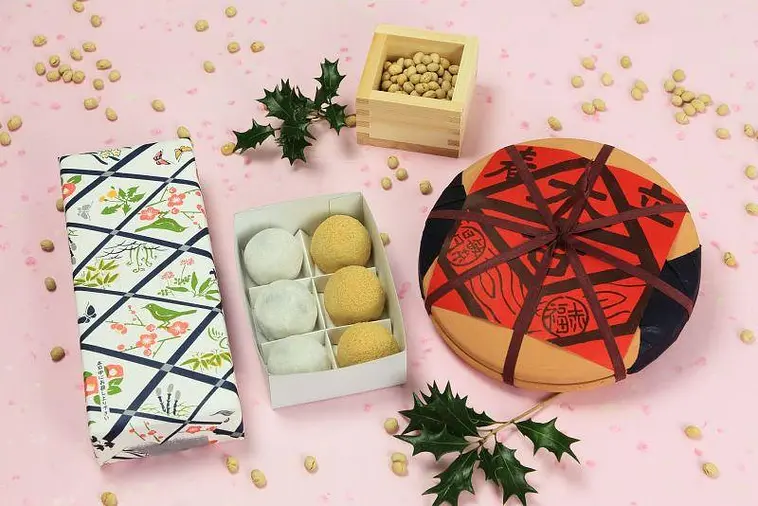
「立春」(二月四日)は、二十四節気の“元日”。
前日の“大晦日”には、豆をまいて一年の邪気を打ちはらい、また新しい年を健康に過ごせるよう黒豆をたべるのが風習でした。これが「節分」です。
二月の朔日餅は、「立春大吉餅」。
黒大豆と大豆を使った二種類の豆大福です。
一つは、大粒の黒大豆とつぶ餡を餅生地で包み、もう一つは、こし餡と大豆を包んだ餅生地にきな粉をまぶしたもの。お餅と豆の食感をお楽しみください。
「鬼は外、福は内」、皆様がまめに過ごされ、ますますご繁栄なさいますよう、心から祈念いたします。
弥生:よもぎ餅
古来、よもぎは「魔除草」と呼ばれ、久しく食されてきました。
昔、三月三日に蓬(よもぎ)餅をお雛様にお供えしたのは、香り高く繁殖力の強いよもぎを餅にして子孫繁栄・無病息災を祈るためです。
三月の朔日餅は「よもぎ餅」。
よもぎの持つ色と香りをそのまま練り込んだ餅生地で、つぶ餡を包んでいます。
女児のすこやかな成長を祈る上巳(じょうし)の節句(桃の節句)にちなんだ餅菓子です。
卯月:さくら餅
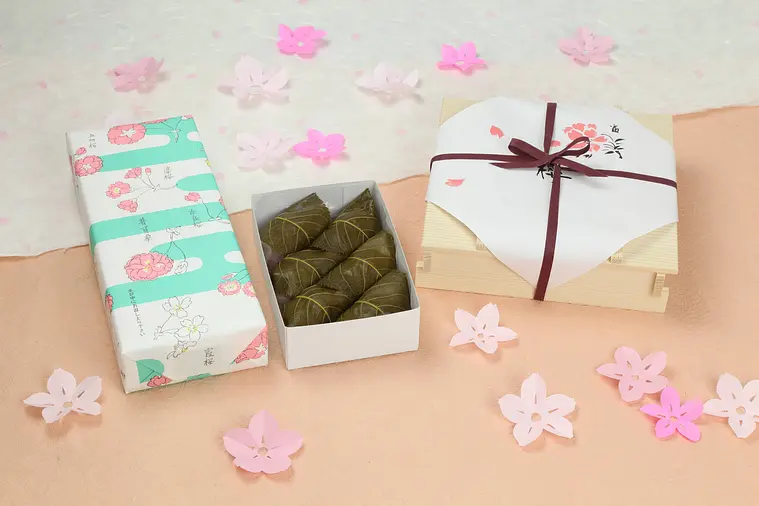
四月、百花の女王、桜の季節です。
桜にちなんだお菓子の中で最も素朴で親しまれているのは、なんと言ってもさくら餅。
四月の朔日餅は、「さくら餅」。
ほのかな桜色に染めたもち米で、こし餡を包んでいます。選び抜かれた桜の葉で包んでいますので、桜葉とともにお召し上がりください。
春の気を味わっていただけることと存じます。
皐月:かしわ餅
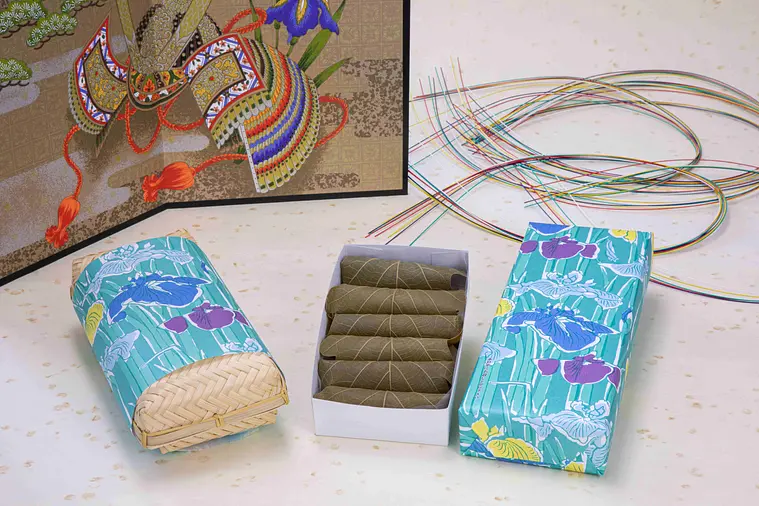
新緑の五月。子供の成長を祝う端午の節句にかかせないのは「かしわ餅」。
柏の葉は新葉が育つまで枯れ落ちず、代ゆずりをします。
また、葉の形が、神参りのときに打つ柏手に似ていることから、子々孫々の繁栄を祈るという縁起があります。
五月の朔日餅は、こし餡の入った餅を柏葉で包んだ「かしわ餅」です。
水無月:麦手餅
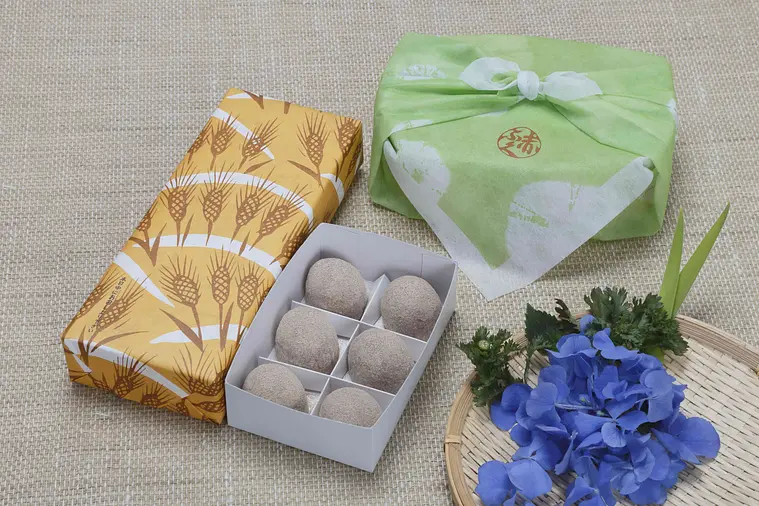
六月は「麦秋」とも呼ばれています。
麦刈りの季節だからです。
農家にとっては風水害のシーズン前に収穫できる麦はありがたい穀物でした。
田植え、麦刈りと繁忙期を終えた人々が、豊作感謝のお祝いにつくったのが「麦手餅」です。
六月の朔日餅は、季節菓子としてながい歴史をもつ「麦手餅」です。
もち麦粉が入った餅生地で黒糖味の餡を包み、上から香ばしい麦粉をまぶした素朴なお餅です。麦の香ばしさをお楽しみください。
文月:笹わらび餅
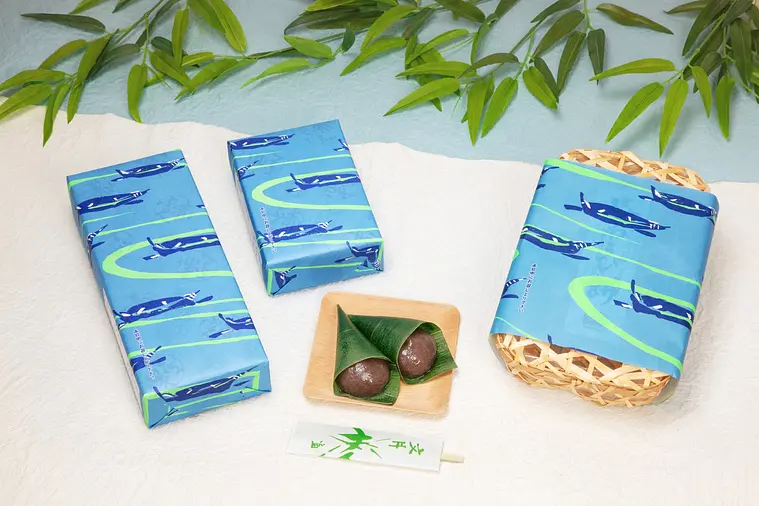
七月、七夕・笹飾り。
笹竹がまっすぐ伸びる姿や清々しい香りには神聖な力があると言われます。
七月の朔日餅は涼しげな見た目の「笹わらび餅」です。
こし餡が入ったわらび餅を七夕にちなんで笹の葉で包んだものです。
よく冷やしてお召し上がりください。
葉月:八朔粟餅
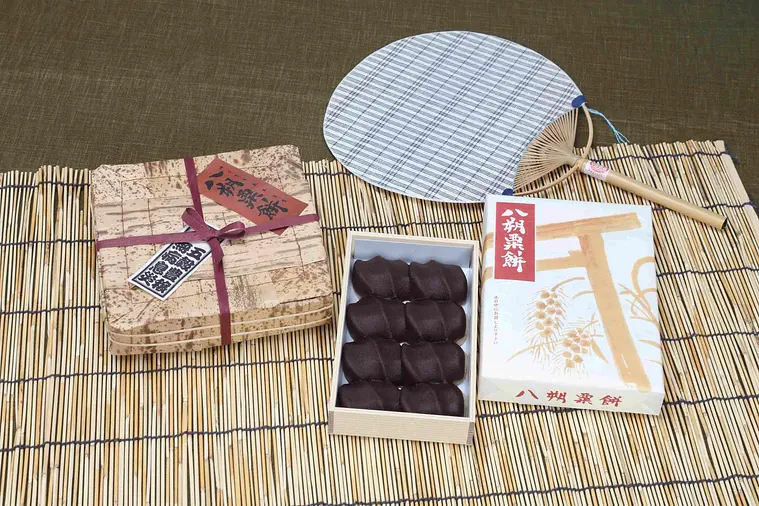
「八朔」(はっさく)とは、旧暦八月朔日(ついたち)のこと。
そして古来、新穀を贈答して祝う習わしです。
稲(田の実)を祝い、頼みごとをしたので、「たのもの節句」とも呼ばれました。
今日のお中元のはじまりとも言われております。
古く伊勢では五穀のうち、米や粟のお初穂を神前にお供えし豊穣を祈りました。
また、「朔日参り」の中でも八月一日は特に「八朔参宮」と呼び、参拝者も多く、あわ餅を食べる習わしです。
このような風習を受け継ぎ、毎年八朔のあわ餅はつくられています。
粒を残して作ったあわ餅に、昔ながらの黒糖味の餡をのせたものです。
粟の粒感と黒糖の風味をお楽しみください。
長月:萩の餅
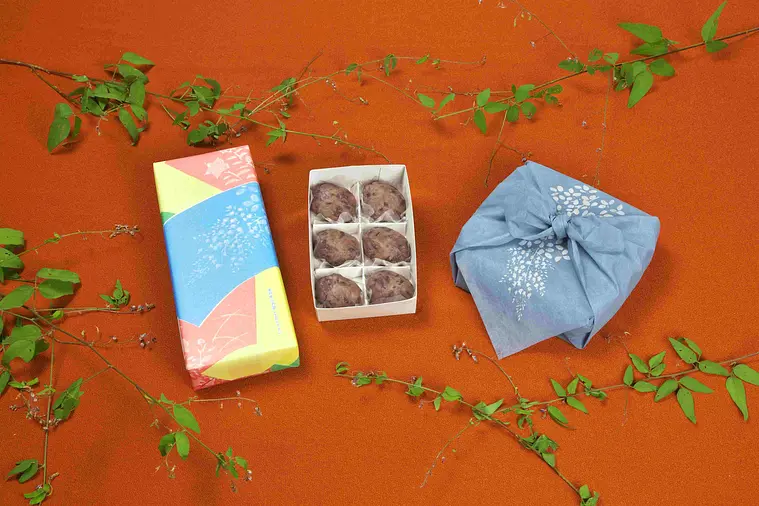
みのりの秋。収穫のよろこびを、古人はおはぎをつくって祝いました。
秋の七草の一つである萩は、草かんむりに秋と書きます。
古代から親しまれる草花です。
小豆のつぶつぶとしたつぶ餡の色や形を、咲きほこる萩の花に見たてたのがおはぎの由来です。
九月の朔日餅は「萩の餅」。
季節菓子としてなじみ深いおはぎです。
ほんのり塩味をきかせた「萩の餅」はあたたかいお茶がよく合います。
神無月:栗餅
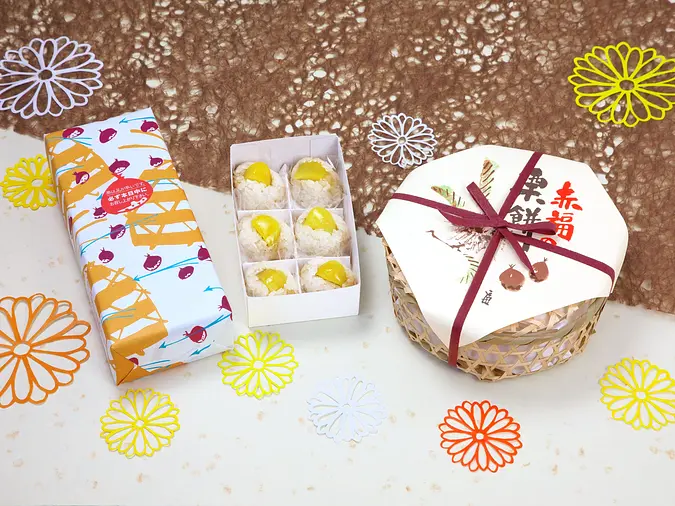
今の十月、旧暦の九月九日は、五節句の中でも最も大切な「重陽の節句」。
この日、人々は菊花を浮かべた酒をくみ、栗飯や栗菓子を食べ節句を祝い、不老長寿を祈りました。
このような風習にならい、十月の朔日餅は「栗餅」。
もち米の食感を程よく残した生地で、風味豊かな栗餡(あん)を包み、栗の甘露煮を載せたもの。
選び抜かれた栗の味と薫りに、秋を味わいください。
霜月:ゑびす餅
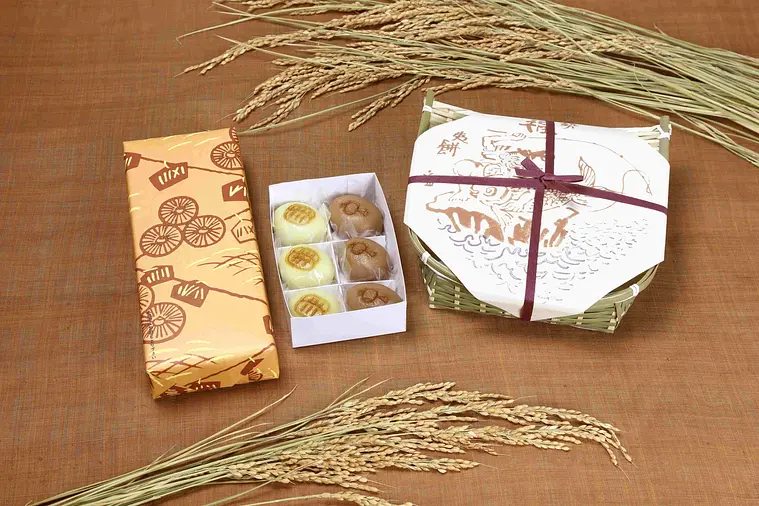
十一月は、商売繁盛を祝うまつり「ゑびす講」のある月。
商人(あきんど)にとって大切な“ゑびす月”です。
そこで十一月の朔日餅は、商いの神ゑびす様にちなみ「ゑびす餅」です。
打ち出の小槌に見立てた餅は、餡も生地も黒糖の味わい。
黄金色の小判に見立てた餅は、さっぱりとした柚子風味。
みなさまの商売繁盛と開運招福を祈願いたします。
師走:雪餅
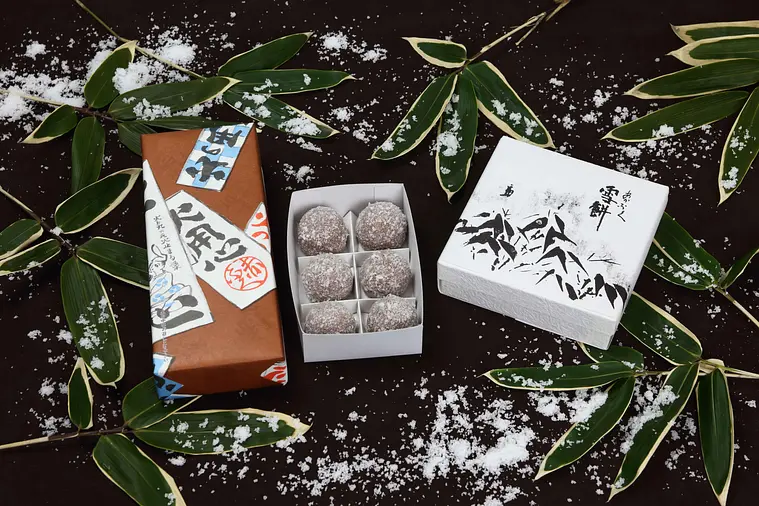
十二月は、暦の上では「大雪」。
暖かな伊勢路にも冬将軍が到来し、寒さ厳しくなる季節です。
十二月の朔日餅は、この季節にちなみ、「雪餅」。
もろこし粉入りの餅生地でこし餡を包み、もち粉をまぶしたもの。
うっすらと雪化粧した大地に見立てたお餅です。
年の瀬も近づき慌しくなると今年も一年が終わります。














.png)
